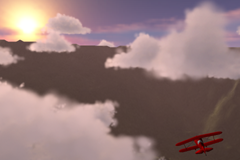expletive said:
I understand where you're coming from. I would think, however, that at a game developers conference, the impact of these techniques to gameplay would figure prominently into the discussion.
If its just strictly technical discussion on what CAN be done that's fine, and i see your point. However, i dont think it makes it any less valid to question whether or not any of the these talking points are relevant to the gaming experience amongst ourselves, even if they aren't doing it.
Slightly OT: Personally, i'm starting to feel like everyone (publishers, developers, console makers) is trying to convince the gamer they need more physics. I'm just not sure i'm buying it at the moment. For example, do we need anything more than whats in Oblivion, FEAR, etc? This Ageia physx card is supposedly $299, thats quite a bit of cash. I'm looking forward to seeing and trying out next-gen physics but im getting this feeling they are trying to drive the market to more hardware and checklist items that really wont impact the gameplay. Maybe its just me...
The argument of what does and does not contribute is a rather complicated one.
First of all, there are two ways in which physics can contribute to a game:
1) To purely visual effect, physics that affects "effects objects" that are affected by everything else, but don't impart motion to gameplay objects. An example might be small rubble in a collapsed building bouncing off a character - the rubble reacts to itself and the gameplay objects (i.e. the character), but doesn't affect the gameplay objects (i.e. doesn't push the character away or anything). This type of stuff will be more easily and more immediately leveraged to good effect.
2) "Global", "gameplay" physics that affects all objects - with the potential to impact gameplay. This type of stuff will be more challenging to do, or to do well, depending on the type of game.
Both are valid and potentially very compelling uses of physics in a game. If a game can use phyiscs in a compelling way that affects and improves gameplay, all the better, but I wouldn't move to downplay the impact of "effects physics" - generous and judicious use of such can really help spruce up a game visually beyond what it might otherwise be, and generally lend a more realistic and solid feel to things. Such things, like all "presentational" aspects of a game can also help improve the game experience, if not fundamentally the gameplay mechanics - afterall, sometimes the substance IS the style, and games often do directly benefit from the purely aesthetic and presentational such that your enjoyment might suffer without that.
If you are to argue that we should shy away from anything that does not fundamentally affect or improve game mechanics (as opposed to the broader sense of the game experience), you may aswell argue for a regression to simple technology and graphics generally. Afterall, things like HDR or pixel shaders etc. don't in and of themselves improve gameplay mechanics!

At least with physics there is the opportunity to do both.
Really, I think progress here is very important. It is unthinkable that we could continue to march toward photorealistic rendering without paying heed to our capability to realistically express natural motion and behaviour. We have kind of ignored that up to this point, at least relatively speaking, and I think it's certainly more than time for this area to step forward.
Laa-Yosh said:
All the movies were created by external, independent animation studios
I've seen this claimed a number of times now - sorry to be picky, I know
some of the footage was created like this, but certainly not
all or even most.









